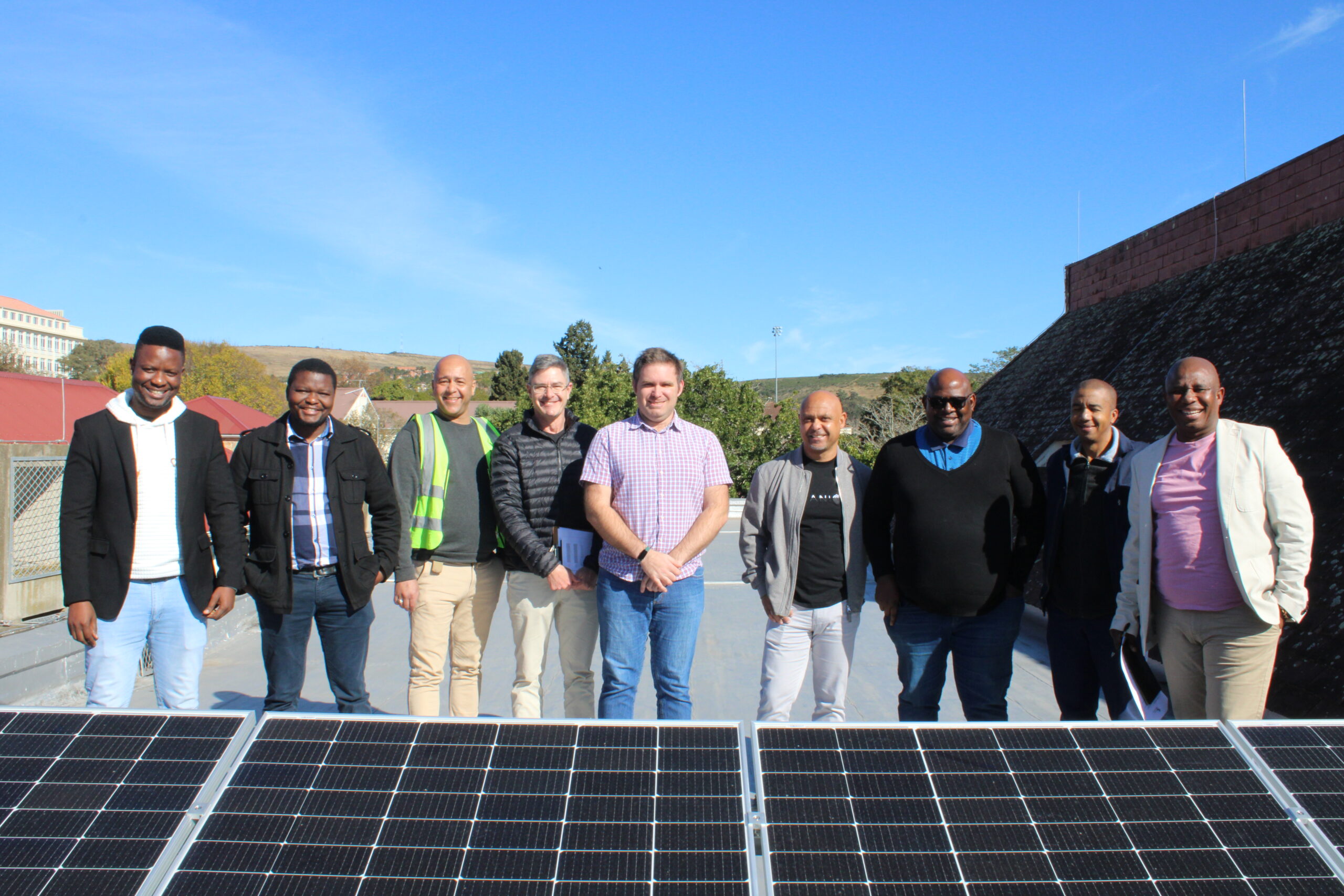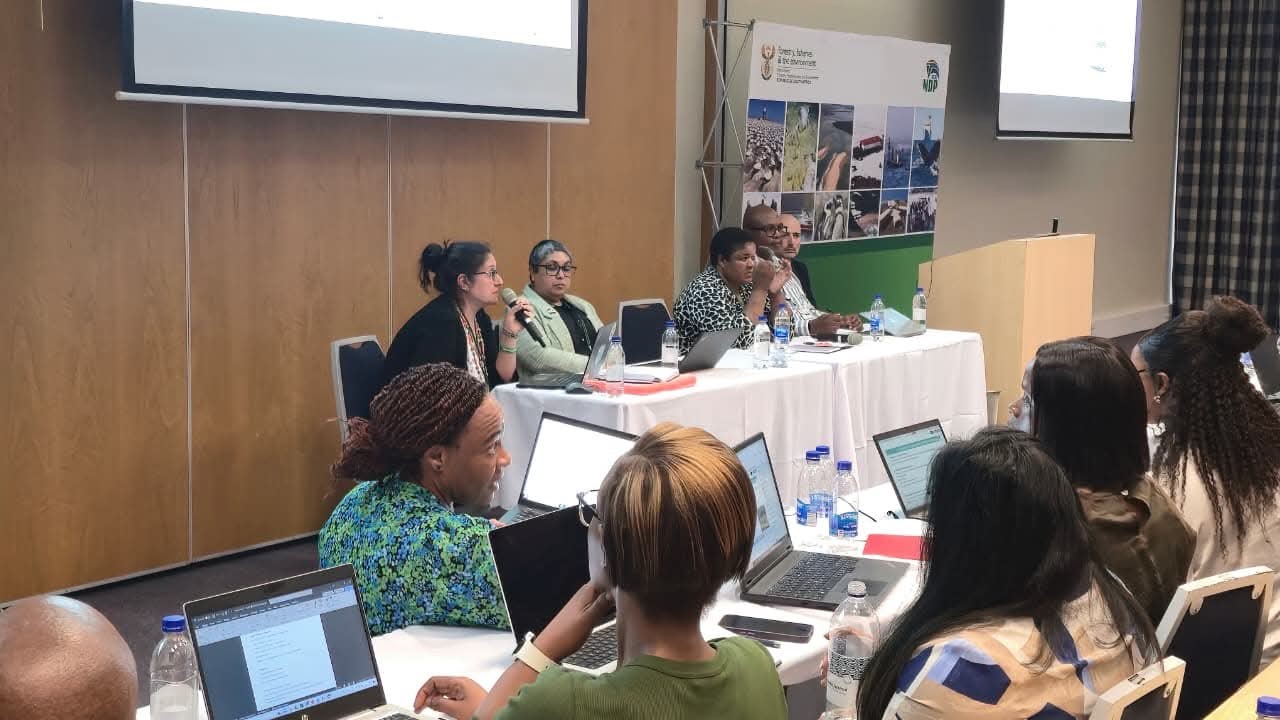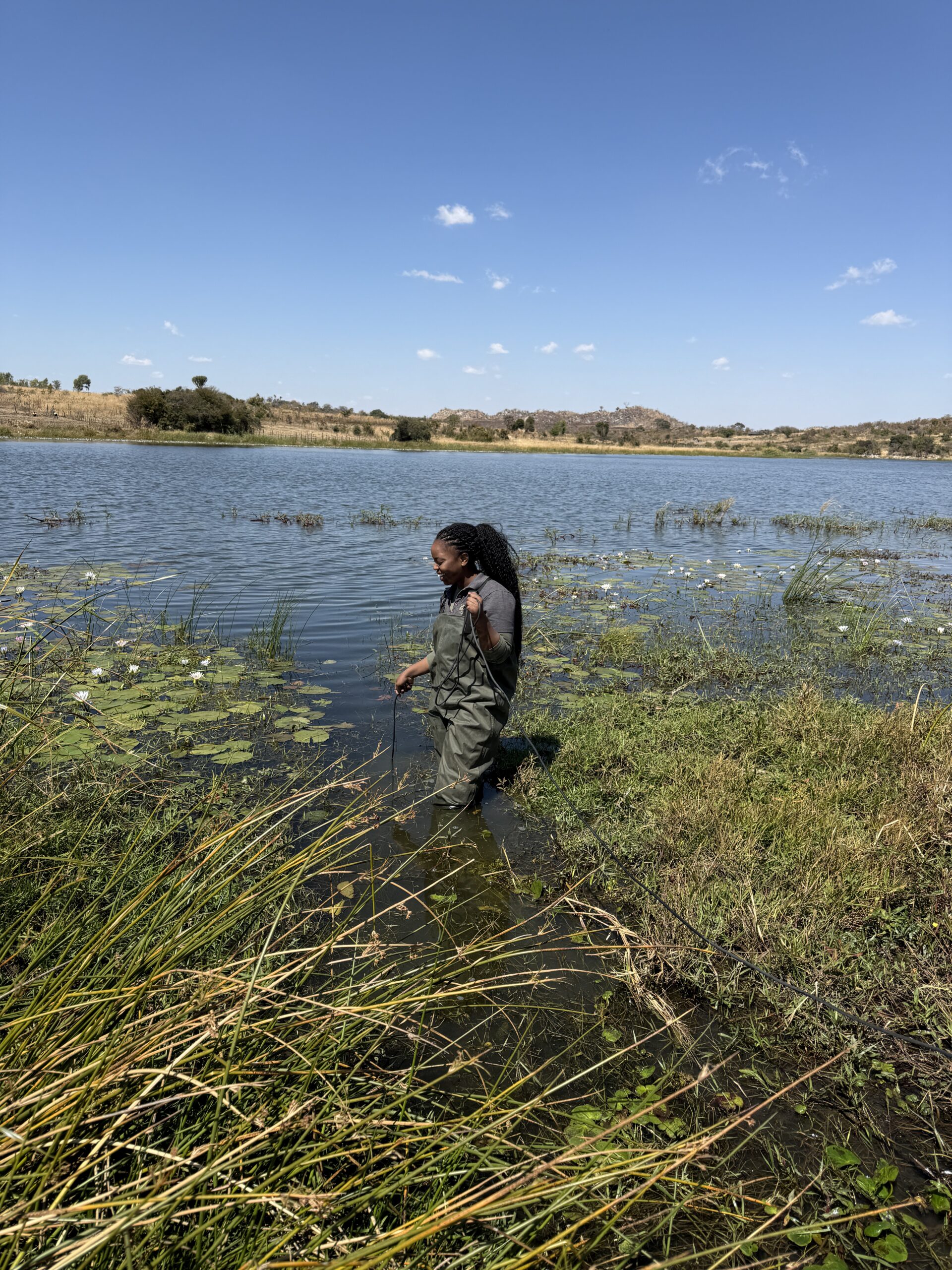By Mbali Ngulube & Siyamthanda Ndinisa
In a major step towards sustainability, NRF-SAIAB has successfully installed 48 solar panels and two large water tanks, each with a capacity of 200,000 litres, at its Makhanda building. These projects were initiated to tackle the frequent challenges of power outages brought about by the nation-wide loadshedding and water supply disruptions within Makhanda, ensuring the uninterrupted operation of essential facilities while promoting a greener future.
This instability to supply consistent electricity and water services posed major risks to NRF-SAIAB’s operations, particularly in its National Collections Facility which houses samples stored in a solution of highly flammable ethanol liquid that is used for preserving well-curated specimens; the Biobank which hosts state-of-the-art equipment, with a total of six minus-80-degree-Celsius freezers and other associated laboratories and storage facilities.
Thus, to ensure the safety, reduce the risks and operational costs of this state-of-the-art infrastructure and vital samples, the NRF-SAIAB requires uninterrupted power and water supply. The Institute will now employ solar energy in addition to existing generators, UPS systems and backup CO2 cylinders to maintain uninterrupted power to the freezers, with constant monitoring using an online system and temperature sensors. These storage conditions and backup systems ensure that the DNA in tissue samples is not damaged and can be used by researchers to generate DNA sequences that are accurate and reliable. NRF-SAIAB Senior Manager: Finance and Operations, Giyani Ngobeni explained that: “We needed a reliable power source to maintain our operations without interruption. The solar project helps us achieve energy self-sufficiency and reduce our reliance on diesel generators, which are both costly and environmentally unfriendly.”
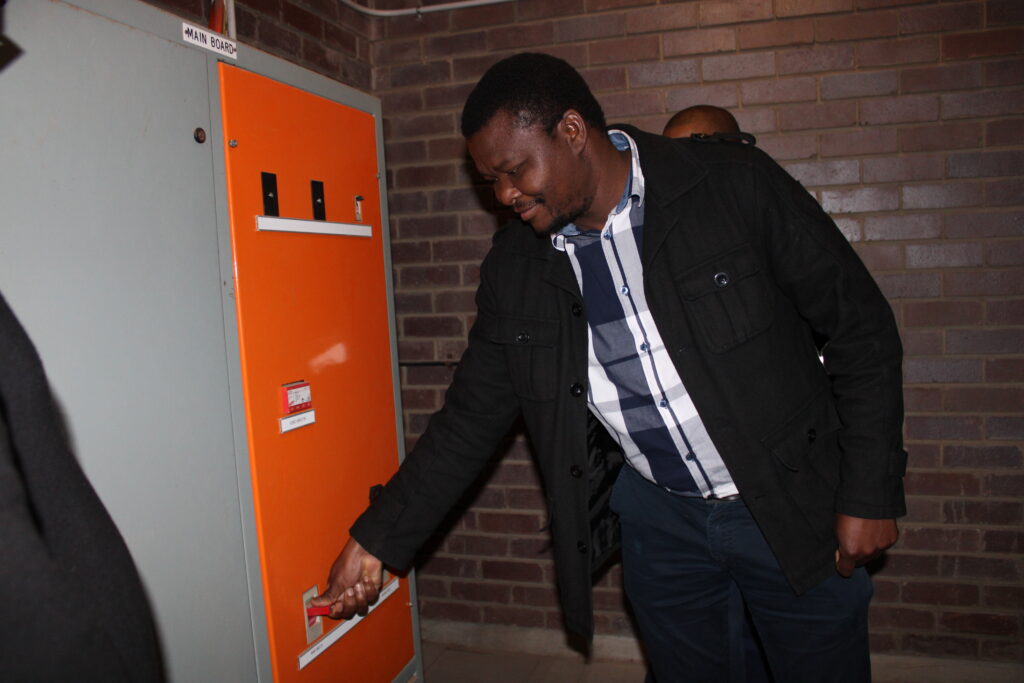
NRF-SAIAB Chief Scientist and Acting Managing Director, Professor Albert Chakona turning off the municipal power to test the solar system functioning.
Alongside the solar project, NRF-SAIAB’s installation of the two large water tanks was intended to complement its sustainability efforts. Giyani further explained that: “Makhanda is viewed unfavourable for researchers and professional staff due to inefficient service provisioning by the local municipality such as constant water cuts, load shedding which is nationwide and declining quality of infrastructure. To mitigate against the risks of water cuts, the institute constructed two large water storage towers for the Collections Facility. NRF-SAIAB also aims to achieve energy self-sufficiency due to the unsustainable annual cost of around R1.5 million spending on diesel during load shedding periods. The continuous air conditioning and ventilation are essential for the operations and preservation of the Collections Facility and solar panels will be beneficial as the frequent power interruptions are damaging laboratory equipment. Additionally, the water tanks project addresses the risk of water cuts, which can turn our facility into a fire hazard. These initiatives are crucial for maintaining the safety and efficiency of our operations.”
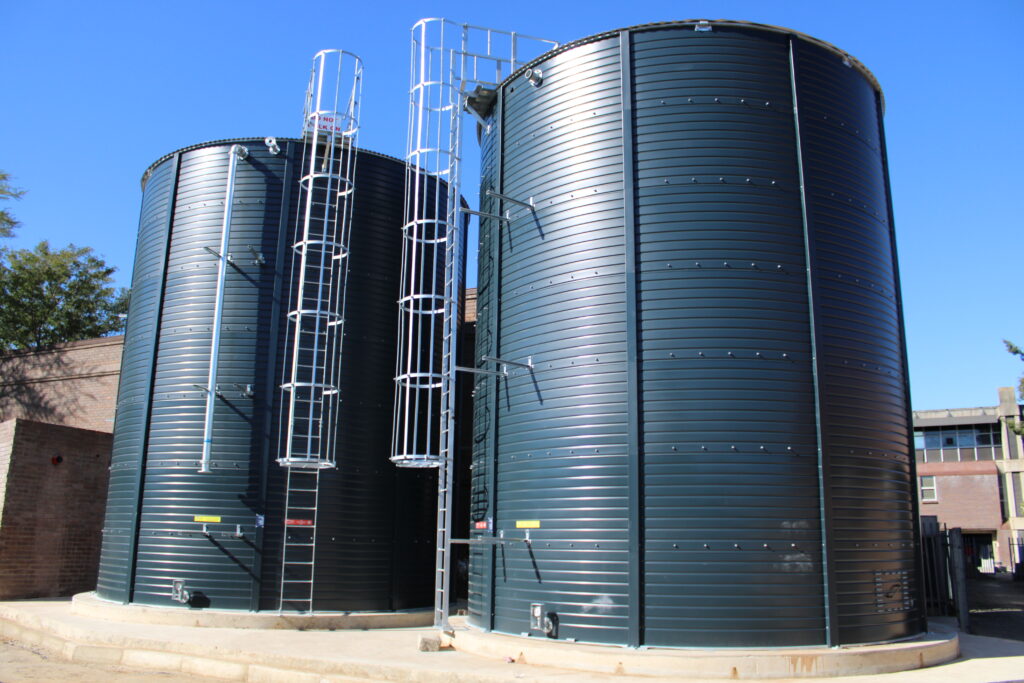
Two newly built water tanks that can hold a capacity of 200,000 litres each.
NRF-SAIAB’s Occupational Health and Safety (OHS) Manager, Thabo Siziba was at the forefront in leading this project, mentioning that safety and effective communication between all stakeholders were top priorities during the project’s execution. “Before initiating the projects, we conducted a thorough risk assessment to identify potential safety and operational risks. This included analysing structural integrity, electrical systems, and environmental factors. We conducted daily inspections and audits to verify compliance with safety protocols and construction regulations”, he said.
The project team conducted a comprehensive structural and safety assessment of all potential installation sites. “For the Collections building, we conducted a risk analysis. The decision was made to exclude this building from the installation plan to mitigate fire risk and protect valuable intellectual property. Instead, the focus was shifted to the main office building, where the infrastructure was deemed safer and more suitable for solar panels” Thabo added.
The collaboration of the Senior Manager for Finance and Operations, OHS Manager and the Information Technology (IT) Manager played a crucial role in the execution and completion of the two projects. The technological capabilities and energy efficiency of NRF-SAIAB have been significantly enhanced. Wesley Phillip, NRF-SAIAB’s IT Manager explained that: “The inverter has a 20ms switch-over capability, ensuring that electrical equipment remains online. The 48kW worth of photovoltaic (PV) panels have shown a reduction of around 25% in daily municipal electricity consumption during winter, with expectations for further reduction in summer.” Furthermore, Wesley’s interest in motivating for the solar project was driven by the need to ensure that IT equipment remains online and fully functional, and to help NRF-SAIAB reduce overall running costs.
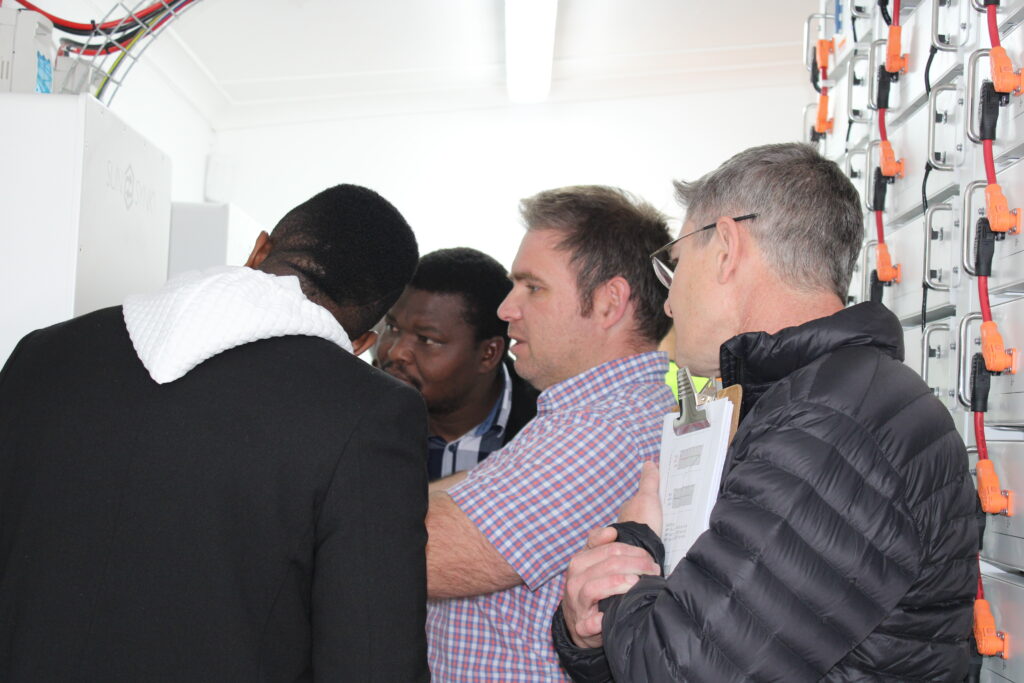
NRF-SAIAB IT Manager, Wesley Phillip explaining how the equipment works.
Innovative technologies were employed to maximize efficiency. “We transitioned to a ‘high-frequency transformer-less system’, which is cost-effective and offers better overall efficiency. This modular design allows us to increase PV input, output capacity, or runtime independently,” noted Wesley.
The successful execution of the solar and water tank projects marks a significant milestone in NRF-SAIAB’s journey towards sustainability. These initiatives not only address immediate operational challenges but also contribute to long-term research excellence and environmental responsibility.
